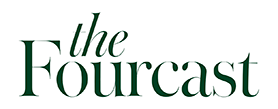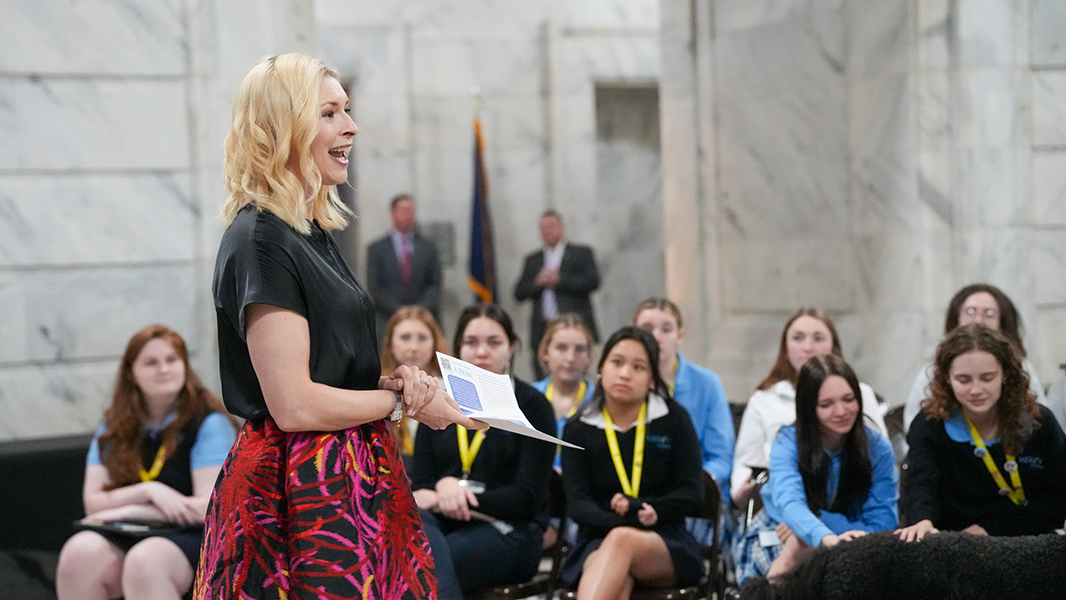Texas Senate Bill 2 (SB 2) makes Texas the largest state to implement Education Savings Accounts (ESAs), colloquially known as “private school vouchers.” The bill earmarks $10,000 per child for qualifying families to use for private school tuition, educational expenses or costs associated with homeschooling.
Gov. Greg Abbott signed the bill into law May 3, 2025, fulfilling his 2022 re-election campaign promise of establishing a universal ESA program in Texas. The law went into effect Sept. 1. Dr. Laura Leathers, Eugene McDermott Head of School, reflects on the recent bill.
“How do you balance a public education system with the ability of parents to make choices that are in the best interest for their children?” Leathers said.
Under SB 2, passed by the 89th Texas Legislature, families of four with incomes below $162,000 will be given priority to receive ESA funds. For context, the Census Bureau reported in 2019 that the median income for a family of four in Texas is $84,724. Families with children who have disabilities will also be given priority and are eligible to receive up to $30,000 depending on their needs.
“I think that the great thing about Dallas is that there are so many school choices for families,” Leathers said, highlighting options like charter, independent, single sex, coed, religious and public schools. “And for some families, this [bill] could help them access additional school options for their children.”
The bill allocates $1 billion in ESA funding for the 2026-2027 school year, a funding limit that means approximately 75,000 to 100,000 students of around 5.5 million Texas school-aged children may receive “vouchers” in the coming school year.
Supporters of the school choice movement laud SB 2 as a groundbreaking program that may make private education more accessible for low-income families. A press release from the office of Texas Sen. Brandon Creighton (R), who authored SB 2, said that every child in Texas deserves educational opportunities to help them succeed and that SB 2 would further that goal. Sen. Creighton did not respond to a request for a statement.
Before SB 2 was passed, Texas House Rep. Mihaela Plesa (D) authored what she described as “fiscally conservative” amendments to SB 2 aimed at creating “strong guardrails” for the bill. Plesa represents District 70, which includes parts of Collin County.
“I filed an amendment on the House floor to make sure that there was an income cap to who can get these vouchers,” Plesa said. “I wanted to make sure that those individuals that really needed it had it first.?Unfortunately, that amendment died on party lines.”?
Plesa said that SB 2 poses risks to rural communities, whose public schools may disproportionally bear the brunt of decreased funding. Rural areas often lack private schools, so students living in these communities may not even be able to benefit from ESAs.
Critics also argue that the existence of ESAs, which use taxpayer dollars to fund students’ tuition and supplementary educational needs at private and parochial schools, raises questions surrounding the legality of a program blurring the line between church and state.
Those opposed to ESAs in Texas point to states with similar programs like Florida, Arizona and Iowa, whose funds have gone overwhelmingly to families with children who already attend private schools, though the data is difficult to track.
“We don’t want to see the same mistakes that we’ve seen in other states,” Plesa said. “I want to create reasonable parameters and reasonable accountability measures.”
Supporters hope that beyond providing families with the means to afford a private school education, the ESAs will stimulate competition between public and private schools, thus incentivizing improvement in public schools.
“Both [public and private] educational systems need vitalization,” Plesa said, but she, along with others, is unsure if SB 2 will provide the solution that the school systems need.
Critics worry that ESAs will divert money away from resource-strapped public schools and into private schools, which are not held to the same legal requirements as public schools and whose practices sometimes lack transparency.
“I have concerns about how reallocating public funds to private schools will hurt the public school systems,” Leathers said, adding that even small decreases in student numbers at public schools lessen their funding but do not lessen many of their main expenses. “I worry about the future of public education as a result of this.”
Leathers said that since about 82 percent of Texas natives stay in the state, one of the highest retention rates in the country, improving Texas educational systems is advantageous to everyone.
Similar to Leathers, Plesa stresses the interconnected nature of education.
“Whether we go to a public school or a private school or a charter school, all those education systems are really intertwined,” Plesa said.
Sara Stoltz, Director of Communications, agrees.
“Everybody benefits when you have really good, strong public schools,” Stoltz said. “You want your next generation to be well educated regardless of where they go to school.”
Stoltz highlights the diversity of backgrounds among Hockaday students, many of whom previously attended public and private schools across the DFW area. She said Hockaday’s robust admissions pool provides the school with the privilege of choosing whether or not to participate in the ESA program. However, smaller private schools may opt into the program as a method of recruiting more students.
“We’re really lucky to not be in that position,” Stoltz said, noting that Hockaday’s application numbers rise every year.
Another advantage that eases pressure to participate in the ESA program is Hockaday’s ability to provide need-based tuition assistance for all qualified students, according to Katie Leto, Chief Financial Officer.
“We’re hopeful and thankful that we have such an amazing program and a financial aid office that allows us to ensure that our families that qualify can get the help that they need,” Leto said.
Leathers said the school leadership team has not made any decisions yet regarding participation in the ESA program.
“Historically, Hockaday has not accepted state funds or federal funds,” Leathers said. “So participating in the Education Savings Account Act would be a departure from our previous practices.”
One instance of Hockaday declining government funds, Leto said, was those offered through the federal Paycheck Protection Program (PPP) loans during the COVID-19 pandemic. The program offered forgivable loans to small business and private schools to help cover payroll costs.
“We made the decision that at that time, it was not worth the risk of unknowing,” Leto said.
Regarding SB 2, Leto said that the leadership team is focused on ensuring alignment with the school’s mission for generations to come. She finds it difficult to evaluate what the ESA program may mean for Hockaday, citing the “unpredictability” and “unknown” of potential requirements, which have not been finalized by the state, for schools that accept funds.
Leathers echoes this concern, explaining that she would be wary of new requirements that may take time away from the existing academic curriculum.
“Does accepting federal funds or state funds hamper our ability to function as an independent school?” Leathers said. “I think that’s the big question.”
Regardless of changes in policy, the top priority of the leadership team at Hockaday remains the same.
“Our job is to protect our ability to educate our students in accordance with our mission,” Leathers said.








